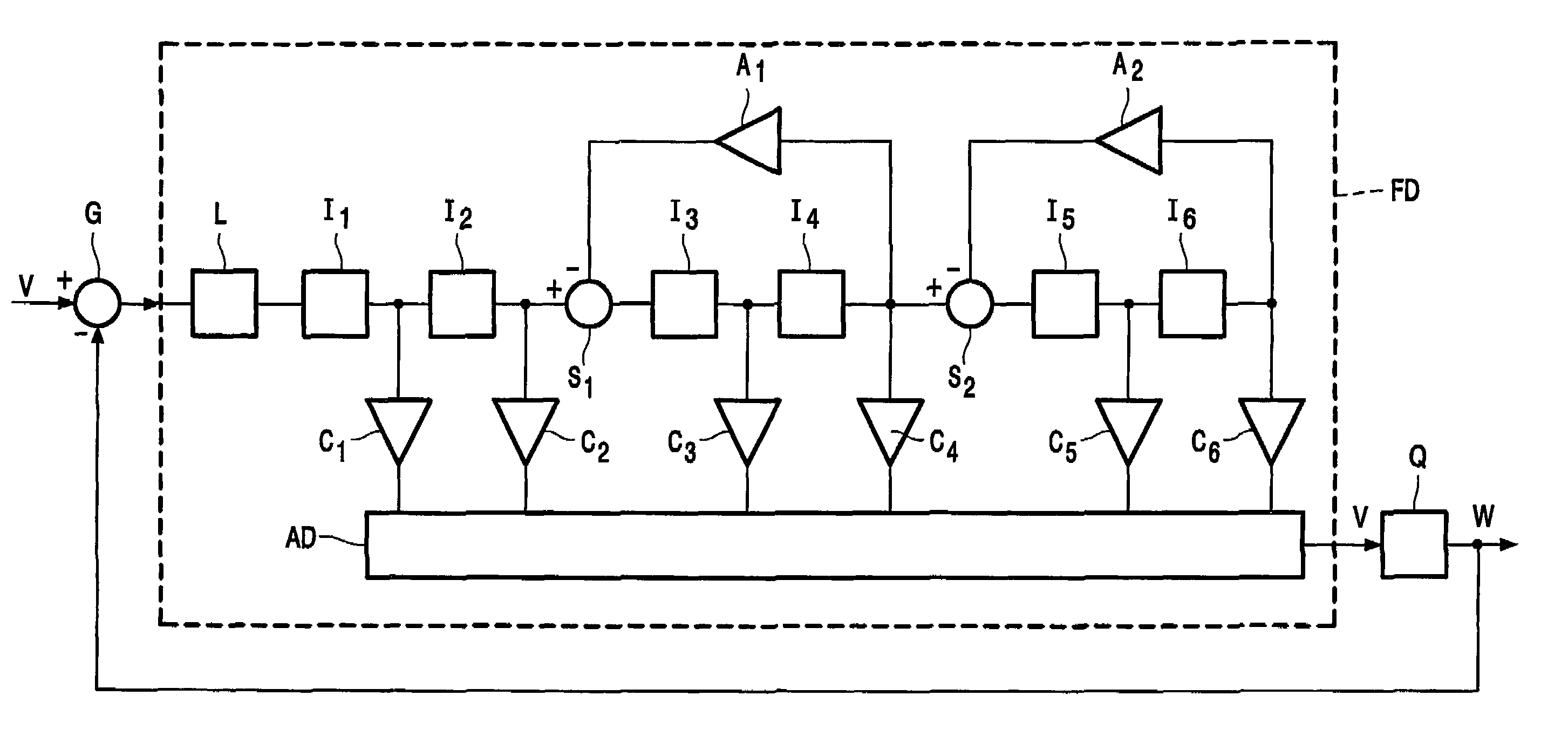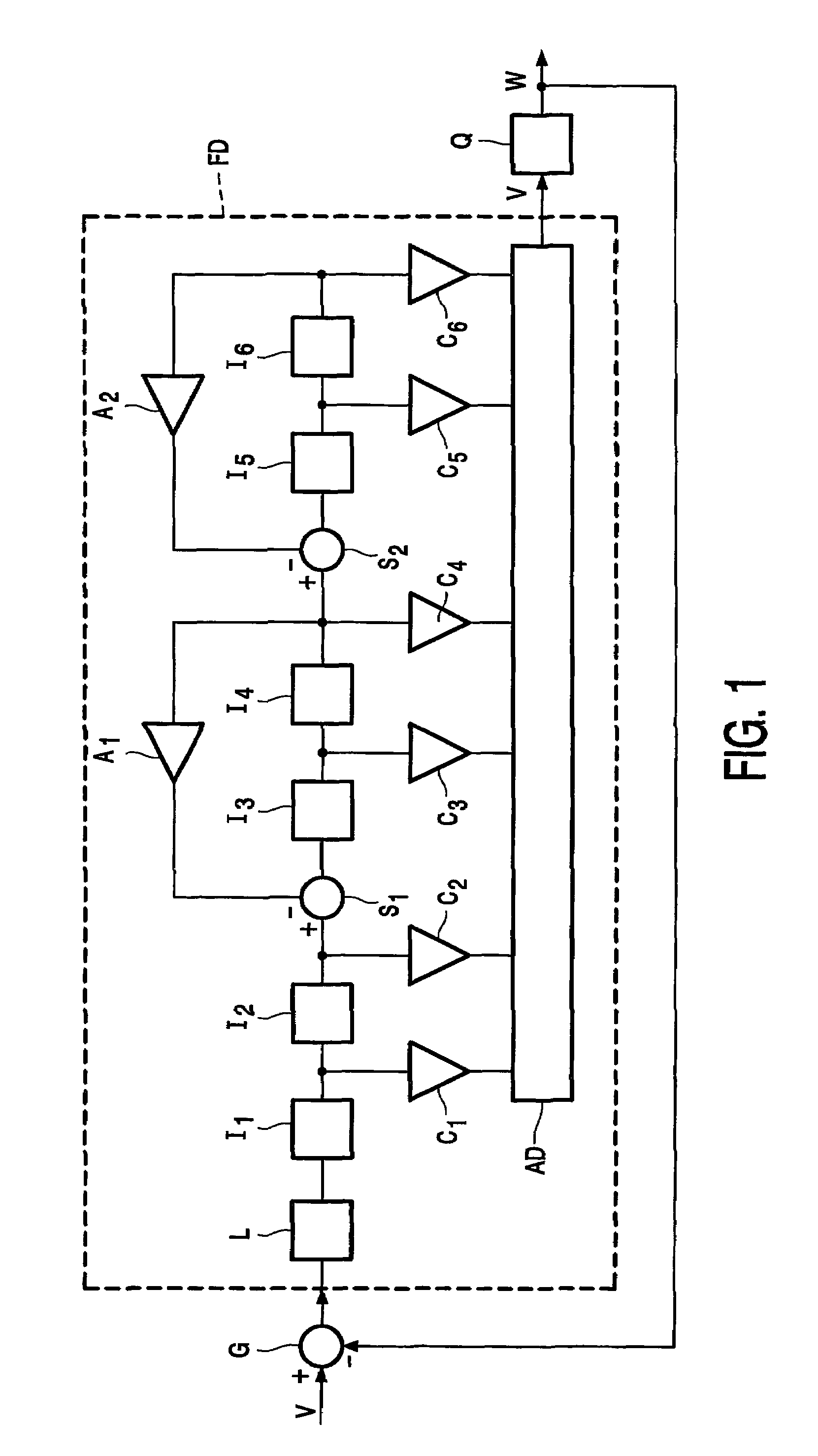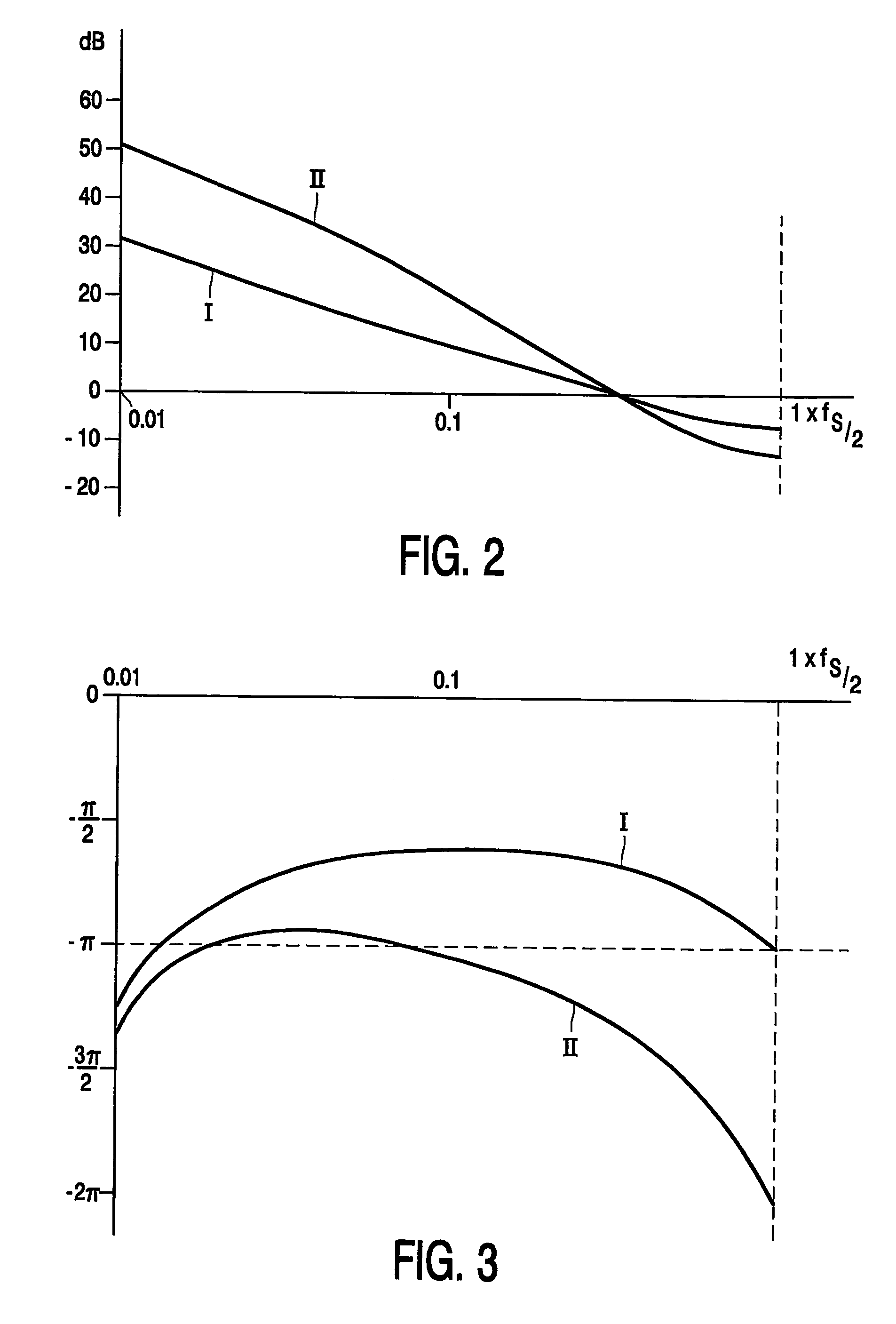Data converter
- Summary
- Abstract
- Description
- Claims
- Application Information
AI Technical Summary
Benefits of technology
Problems solved by technology
Method used
Image
Examples
Embodiment Construction
[0017]The data converter of FIG. 1 comprises a digital low-pass filter FD that receives at its input terminal a digital input signal U, e.g. a digital PCM-signal, through a comparator G that might be a simple subtracter. The output signal V of the digital low-pass filter is quantized in a one-bit quantizer Q and the output W of the quantizer is fed back to the comparator G. Therefore, the comparator subtracts the quantizer output W from the input signal U, the difference signal U-W is passed to the digital low-pass filter FD and the low-frequency content of this difference signal U-W is applied to the quantizer. The output of the quantizer is a series of single-bit pulses, which may, with respect to a reference value, have either +1 or −1 value. The structure of comparator G, digital low-pass filter FD and quantizer Q constitutes a discrete-time sigma delta modulator which keeps the difference between the value of the PCM input signal and the low frequency content of the pulses W as...
PUM
 Login to view more
Login to view more Abstract
Description
Claims
Application Information
 Login to view more
Login to view more - R&D Engineer
- R&D Manager
- IP Professional
- Industry Leading Data Capabilities
- Powerful AI technology
- Patent DNA Extraction
Browse by: Latest US Patents, China's latest patents, Technical Efficacy Thesaurus, Application Domain, Technology Topic.
© 2024 PatSnap. All rights reserved.Legal|Privacy policy|Modern Slavery Act Transparency Statement|Sitemap



